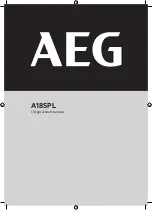
5
Warning.
You should not over-tighten the thumbscrew either as it can be stripped and ruined
with too much forcing. Just apply enough tightening pressure to get a good connection and
not more.
Attach the lamp head (fresnel) to ballast cable to
the ballast
.
The lamp head has a 10 foot cable attached
to it with a gray 3 pin connector on the end as shown in
Figure 6. This connector is keyed and cannot be attached
wrongly to the ballast. Simply find the key and match it to
the connector on the ballast and then turn 1/3 turn to lock
and secure it in place.
Warning.
You should never attach this connector while the
ballast is plugged in to line voltage, nor should you un-attach
it while ballast is plugged in. You run the risk of damaging
the ballast in this case!
Mounting ballast on the
light stand
. The ballast
includes a nylon strap and
carabiner clip (attached to its
back) to allow versatile
attachment in different
configurations to the light stand
or yoke. You can simply attach the carabiner to one of the
thumscrews of the light stand or to the yoke. You can wrap the
nylon strap around the base of the light stand, etc. Many different
configurations are possible with this included type of attachment.
Of course, you can also just lay the ballast on the floor at the base
of the light stand as well. Figure 7 shows the carabiner attached
to the top riser thumbscrew of the light stand.
Plug the ballast into the wall socket
. Make sure the power switch of the ballast is in the
off or
“
0
”
position. Using the included American IEC type power plug, insert the IEC adapter
end into the ballast and the other plug end into the wall socket. The ballast can operate on any
voltage in the world from 100v to 240v 50/60hz. To adapt
the American power plug to another socket type in another
country is a simple mechanical type adapter and no other
transformer or other type of adaptation is necessary.
Turn on the ballast
. Simply turn the ballast switch to
the
“
1
”
or on position. The switch is pictured in Figure 6
right next to the IEC power plug. Once started, the light
slowly comes up to full color temperature over 5 minutes
(or less). It starts faint and gradually builds up to a bluish-
green cast and finally to 5400K for the
“
daylight
”
CDM.
Figure 6
–
The connectors and
switch on the ballast
Figure 7
–
Ballast attached to
stand with carabiner
Figure 8
–
The bulb takes up to five
minutes to stabilize color
temperature.


























